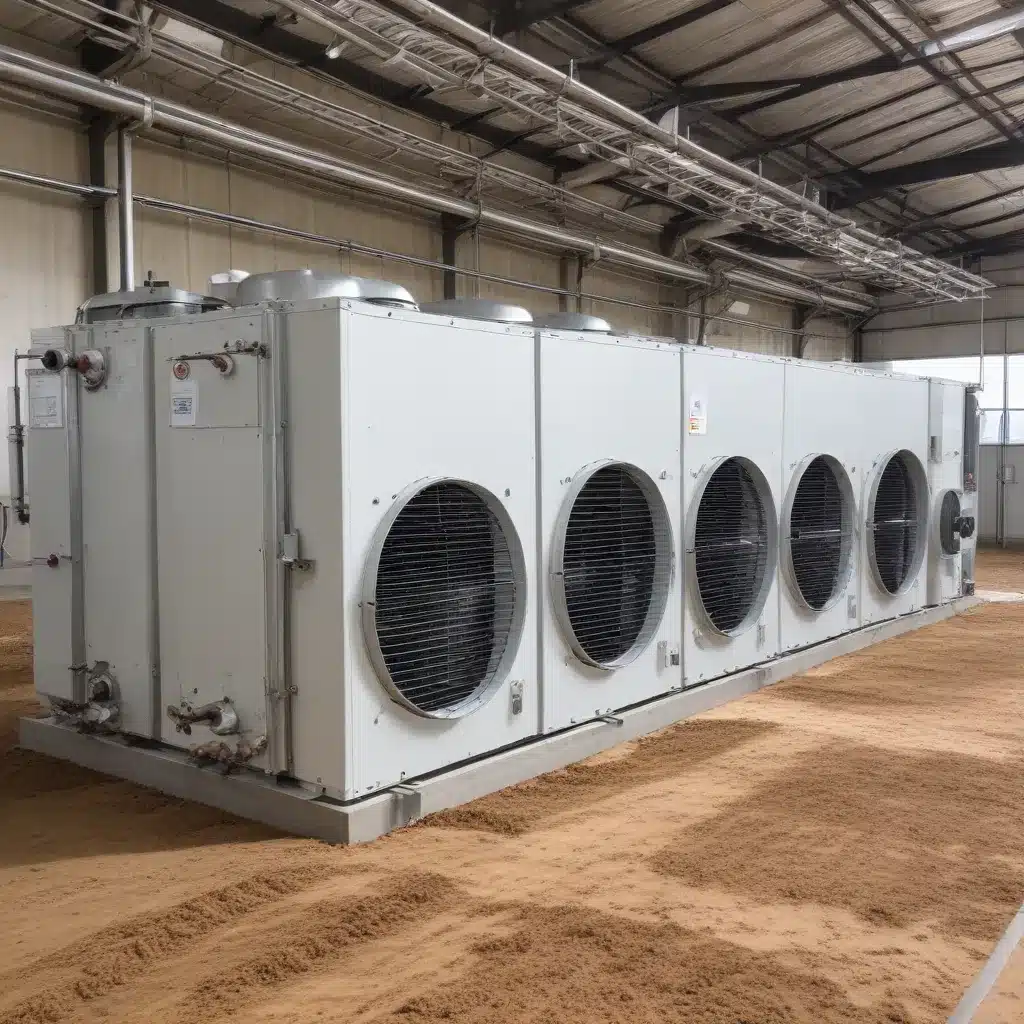
Unlocking the Potential of Air-Cooled Heat Exchangers for Sustainable Heating and Cooling in Indoor Agricultural Facilities
The Versatile Power of Air-Cooled Heat Exchangers
As the world grapples with the pressing challenges of energy consumption and environmental sustainability, the role of air-cooled heat exchangers has emerged as a strategic solution, particularly in the realm of indoor agricultural facilities. These versatile systems offer a promising avenue to unlock energy-efficient and eco-friendly heating and cooling, paving the way for a more sustainable future in controlled growing environments.
Harnessing the Stability of Subterranean Temperatures
At the heart of this innovative approach lies the unique thermal properties of the earth’s subsurface. As the depth beneath the soil increases, the temperature remains remarkably stable, exhibiting minimal fluctuations throughout the year. This natural phenomenon presents a remarkable opportunity to leverage the earth’s inherent thermal capacity for heating and cooling applications.
Air-cooled heat exchangers, also known as earth-to-air heat exchangers (EAHEs), capitalize on this stability by circulating air through a network of underground pipes. As the air passes through these subterranean conduits, it exchanges heat with the surrounding soil, effectively warming the air during the colder months and cooling it during the warmer periods. This passive, energy-efficient approach to temperature regulation can significantly reduce the reliance on traditional, energy-intensive HVAC systems, making it an attractive solution for indoor agricultural facilities.
Optimizing Performance through Thoughtful Design
The success of air-cooled heat exchangers in indoor agricultural settings hinges on the careful design and integration of the system. Factors such as pipe length, depth, diameter, and material selection all play a crucial role in maximizing the system’s efficiency and performance. By employing advanced modeling techniques and leveraging data from remote sensing sources, like the Global Land Data Assimilation System (GLDAS), engineers can accurately predict the soil temperature profiles and tailor the EAHE system to the specific climate and conditions of the target location.
Addressing the Challenges of Arid Regions
One particularly promising application of air-cooled heat exchangers is in arid and semi-arid regions, where the need for sustainable heating and cooling solutions is paramount. In these areas, where traditional HVAC systems often struggle to maintain optimal growing conditions, EAHEs offer a practical and energy-efficient alternative.
Using the GLDAS data, researchers have been able to model the sub-soil temperature profiles in Egypt’s New Delta region, a prime example of an arid agricultural area undergoing significant expansion. The findings reveal that at a depth of 4 meters, the temperature variation remains within a narrow range of just 1.5°C, making it an ideal installation depth for an EAHE system.
By leveraging this stable sub-soil temperature, a single EAHE pipe can provide cooling capacities of up to 400 watts and heating capacities of up to -300 watts, effectively moderating the temperature of the ventilation air before it enters the greenhouse. This versatile performance allows for year-round temperature regulation, ensuring optimal growing conditions and minimizing the reliance on energy-intensive HVAC systems.
Unlocking the Path to Sustainable Agriculture
The integration of air-cooled heat exchangers in indoor agricultural facilities represents a significant stride towards a more sustainable future. By harnessing the earth’s natural thermal properties, these systems not only reduce energy consumption but also contribute to lowering greenhouse gas emissions, aligning with the global push for environmentally responsible practices.
Furthermore, the modular and scalable nature of EAHEs allows for seamless integration into both new and existing greenhouse facilities, making it an accessible solution for a wide range of agricultural operations. As the world continues to grapple with the challenges of food security and climate change, the deployment of air-cooled heat exchangers in indoor farming stands as a testament to the power of innovative engineering and a commitment to a greener, more sustainable tomorrow.
Unlocking the Potential: A Roadmap to Implementation
For indoor agricultural facilities looking to harness the benefits of air-cooled heat exchangers, the path forward requires a multifaceted approach. Key considerations include:
-
Site Assessment: Evaluating the specific climate, soil composition, and physical characteristics of the site is crucial to designing an optimized EAHE system.
-
Data-Driven Design: Leveraging remote sensing data, such as GLDAS, to model sub-soil temperature profiles and inform the system’s design parameters.
-
System Integration: Seamlessly integrating the EAHE with the existing HVAC infrastructure to ensure seamless temperature regulation and energy efficiency.
-
Maintenance and Monitoring: Implementing a robust maintenance plan and monitoring system to ensure the long-term performance and reliability of the EAHE.
By addressing these critical factors, indoor agricultural facilities can unlock the full potential of air-cooled heat exchangers, ushering in a new era of sustainable heating and cooling solutions that contribute to a greener, more resilient future.
Conclusion: A Sustainable Future Powered by Air-Cooled Heat Exchangers
As the world continues to grapple with the pressing challenges of energy consumption and environmental sustainability, the role of air-cooled heat exchangers has emerged as a strategic solution, particularly in the realm of indoor agricultural facilities. By harnessing the stable thermal properties of the earth’s subsurface, these versatile systems offer a promising avenue to unlock energy-efficient and eco-friendly heating and cooling, paving the way for a more sustainable future in controlled growing environments.
Through thoughtful design, data-driven optimization, and a deep understanding of the unique challenges posed by arid regions, air-cooled heat exchangers have the potential to revolutionize the way we approach temperature regulation in indoor agriculture. By seamlessly integrating these systems into new and existing greenhouse facilities, we can unlock a future where sustainable practices and innovative engineering work hand-in-hand to foster a more resilient and environmentally responsible food production system.
As the world continues to evolve, the promise of air-cooled heat exchangers stands as a testament to the power of human ingenuity and a commitment to a greener, more sustainable tomorrow. By embracing this transformative technology, indoor agricultural facilities can not only reduce their energy footprint but also contribute to the global effort to safeguard our planet for generations to come.

